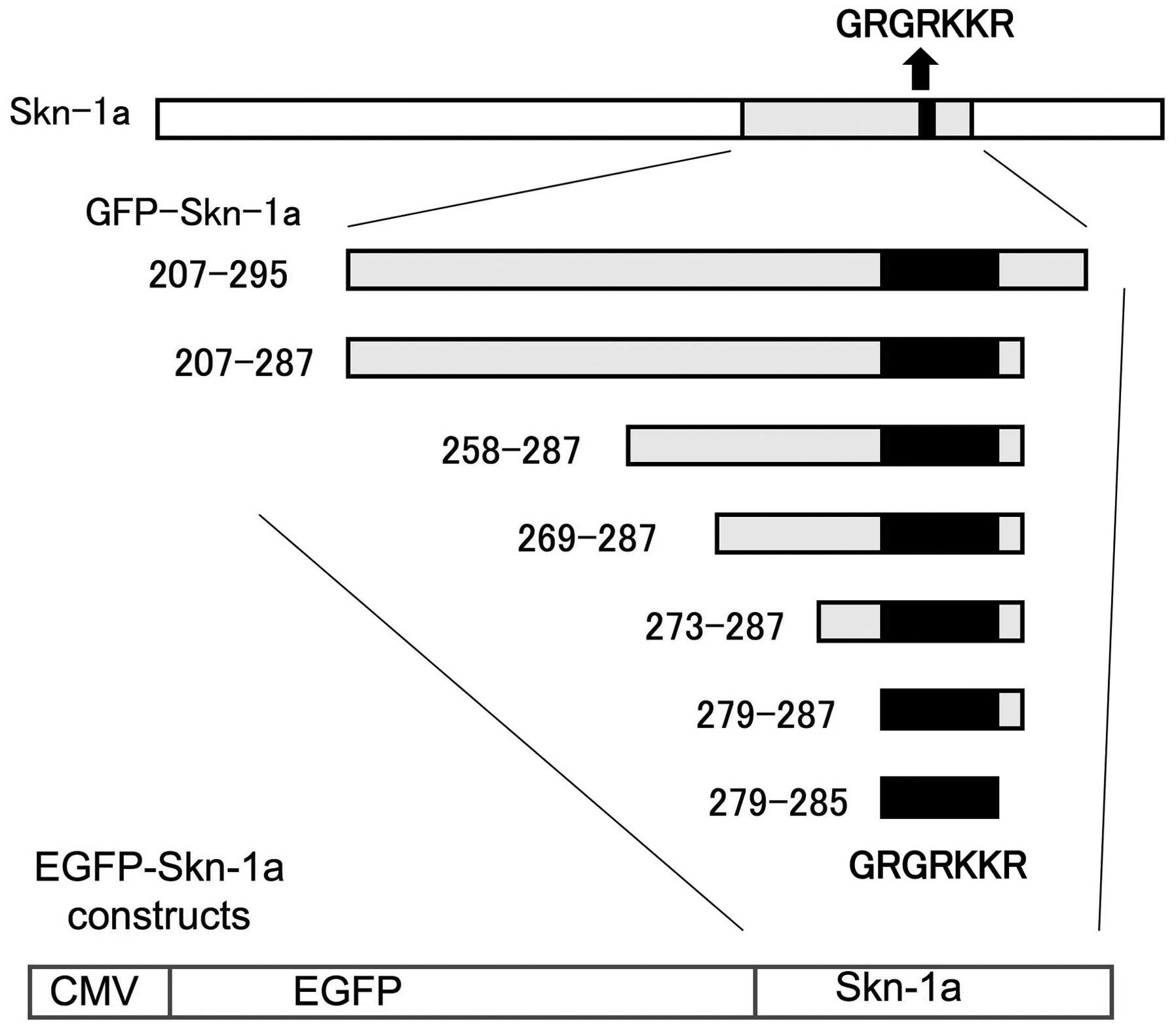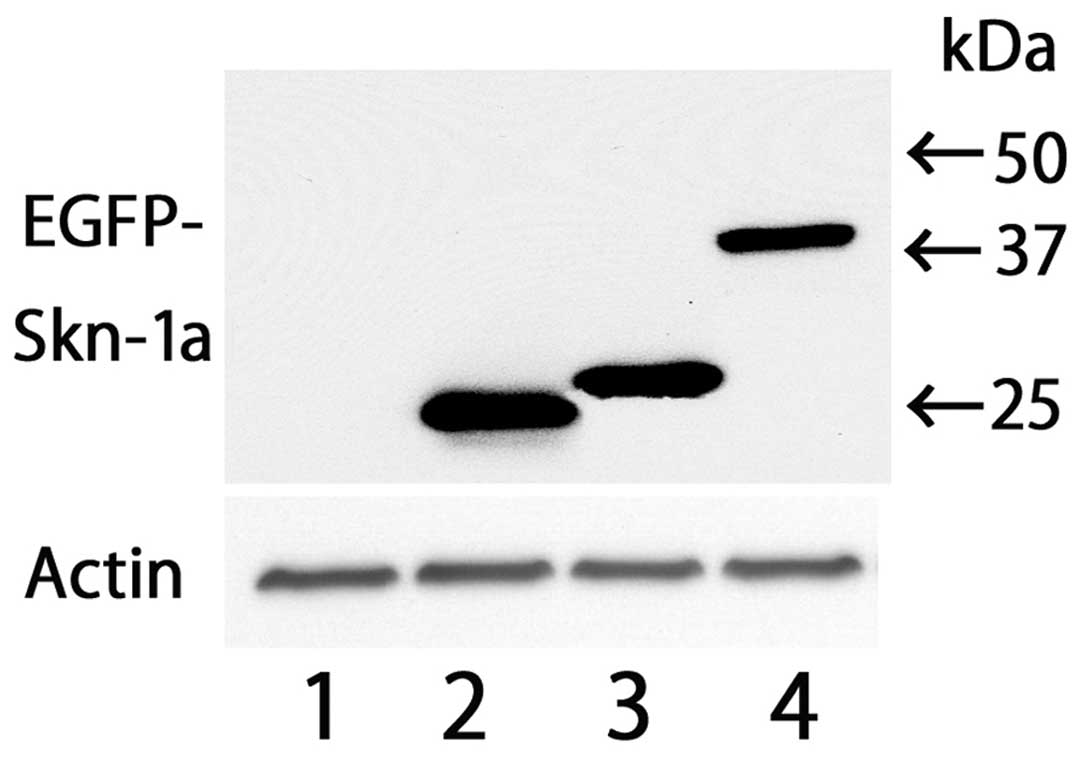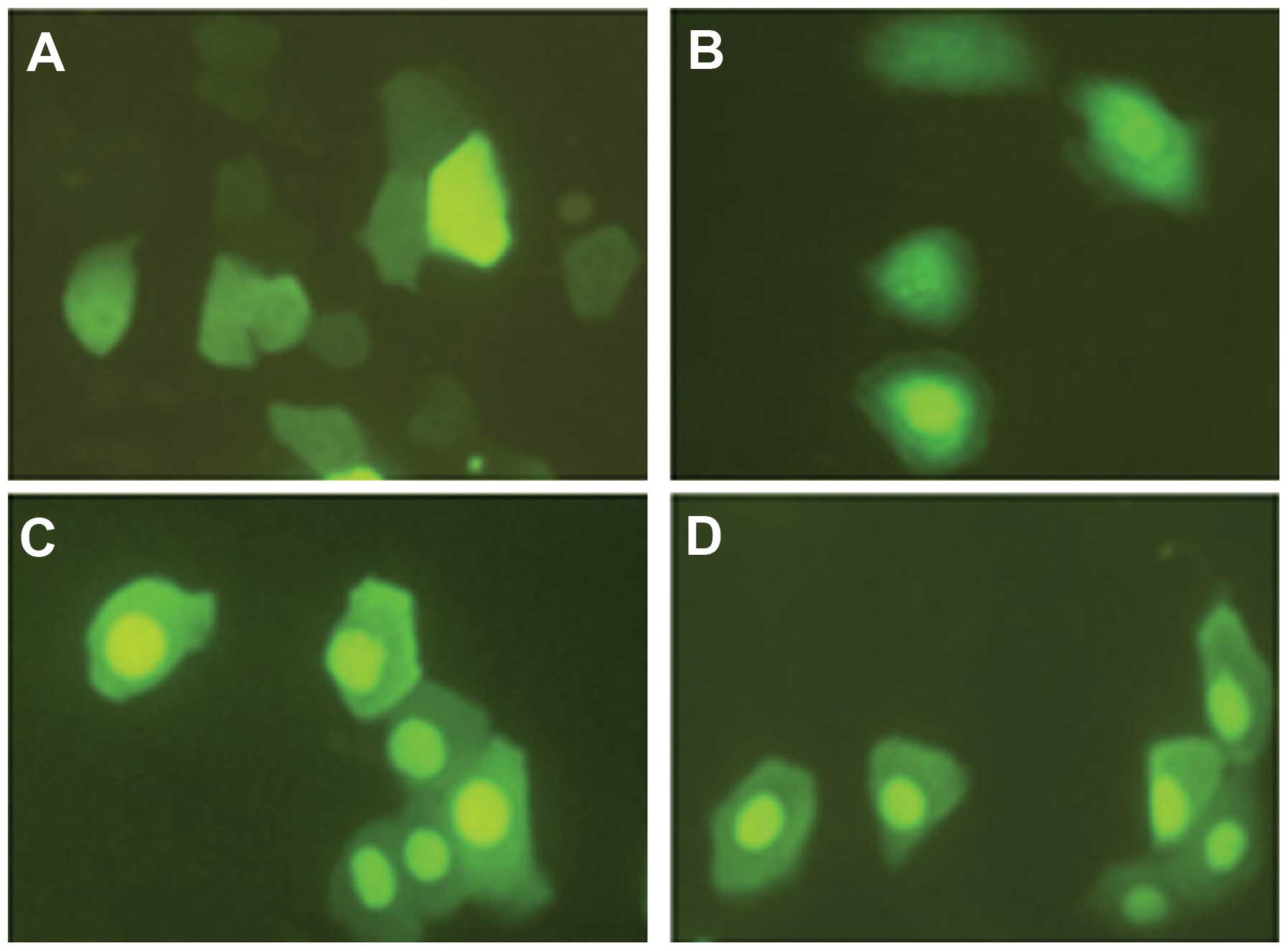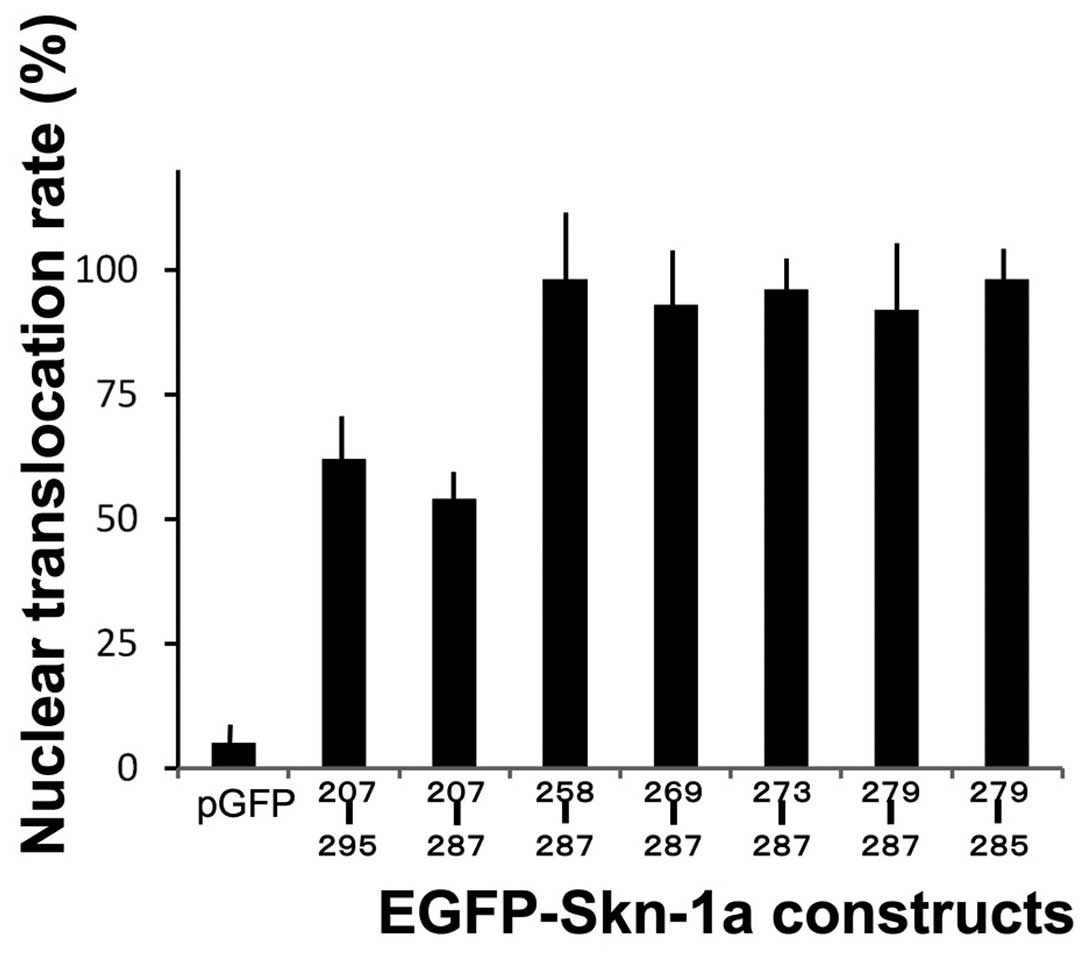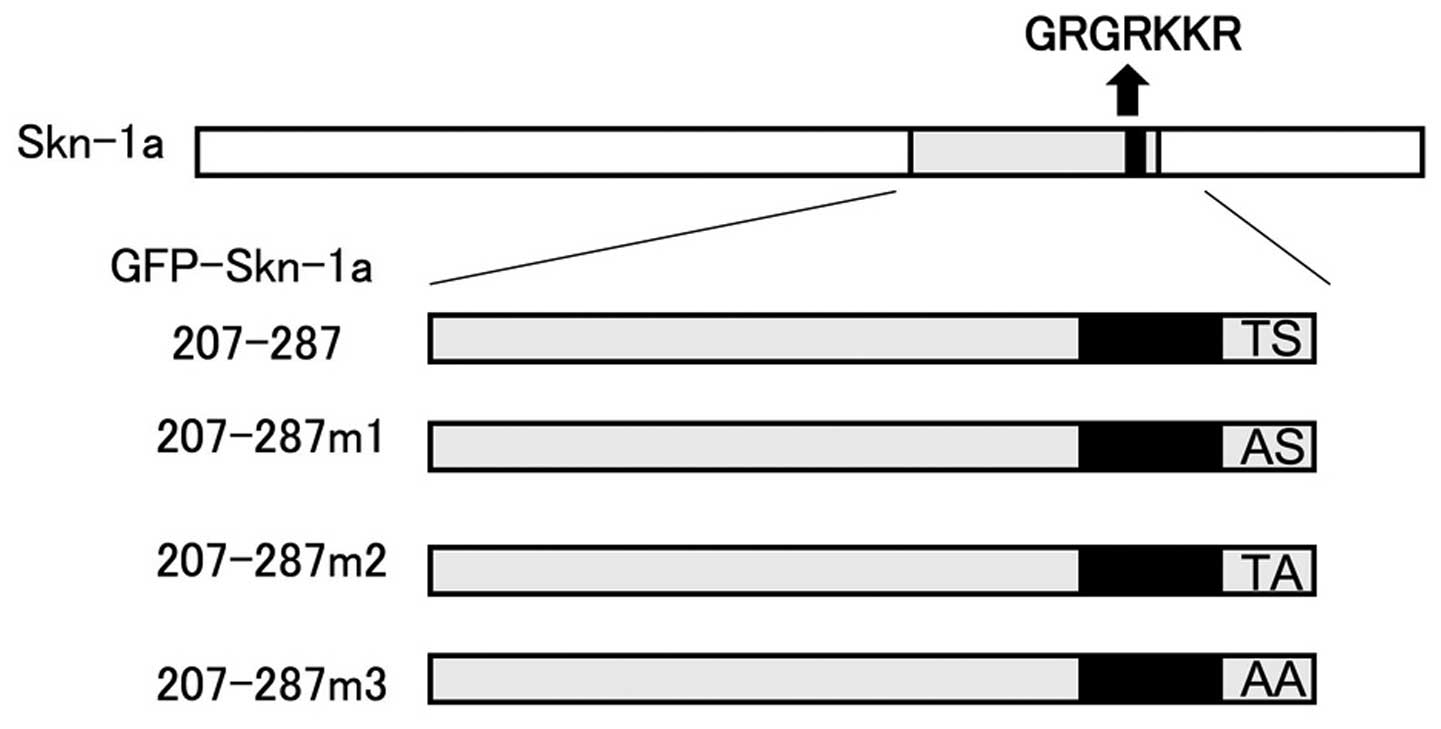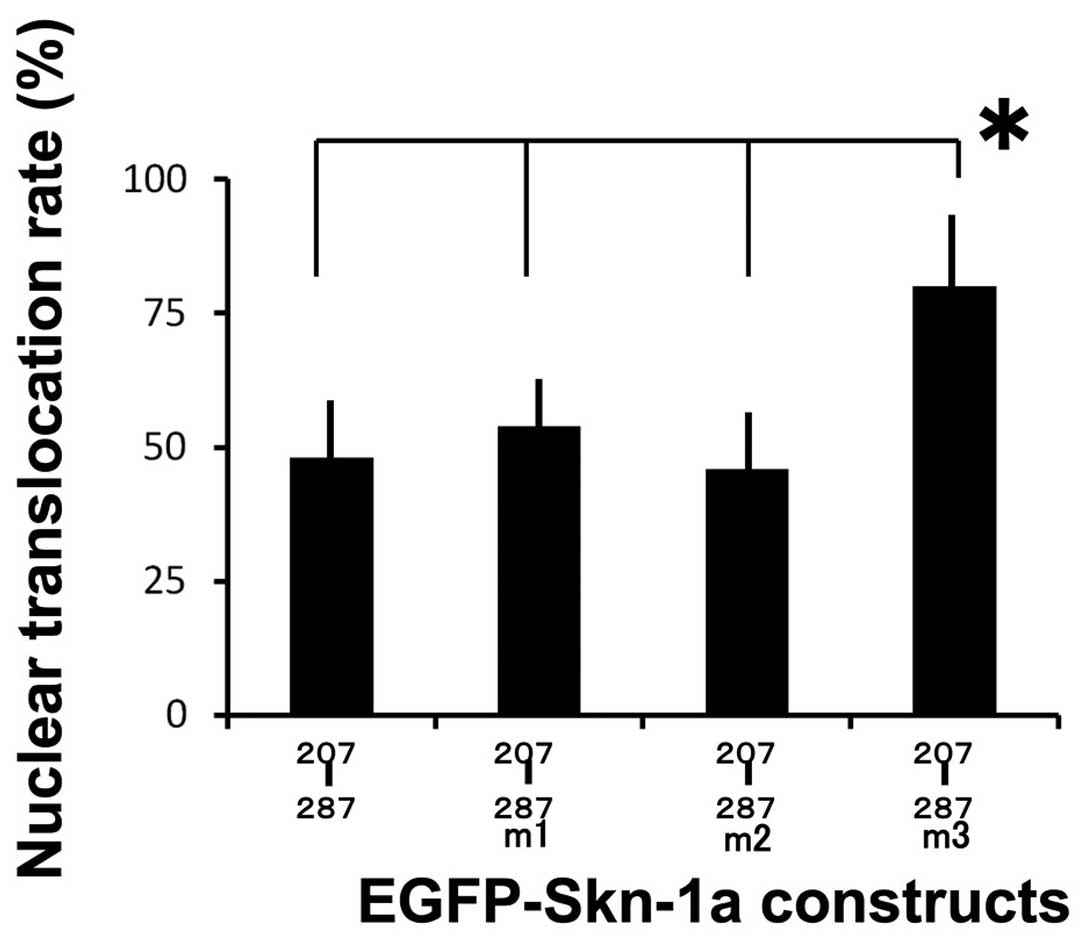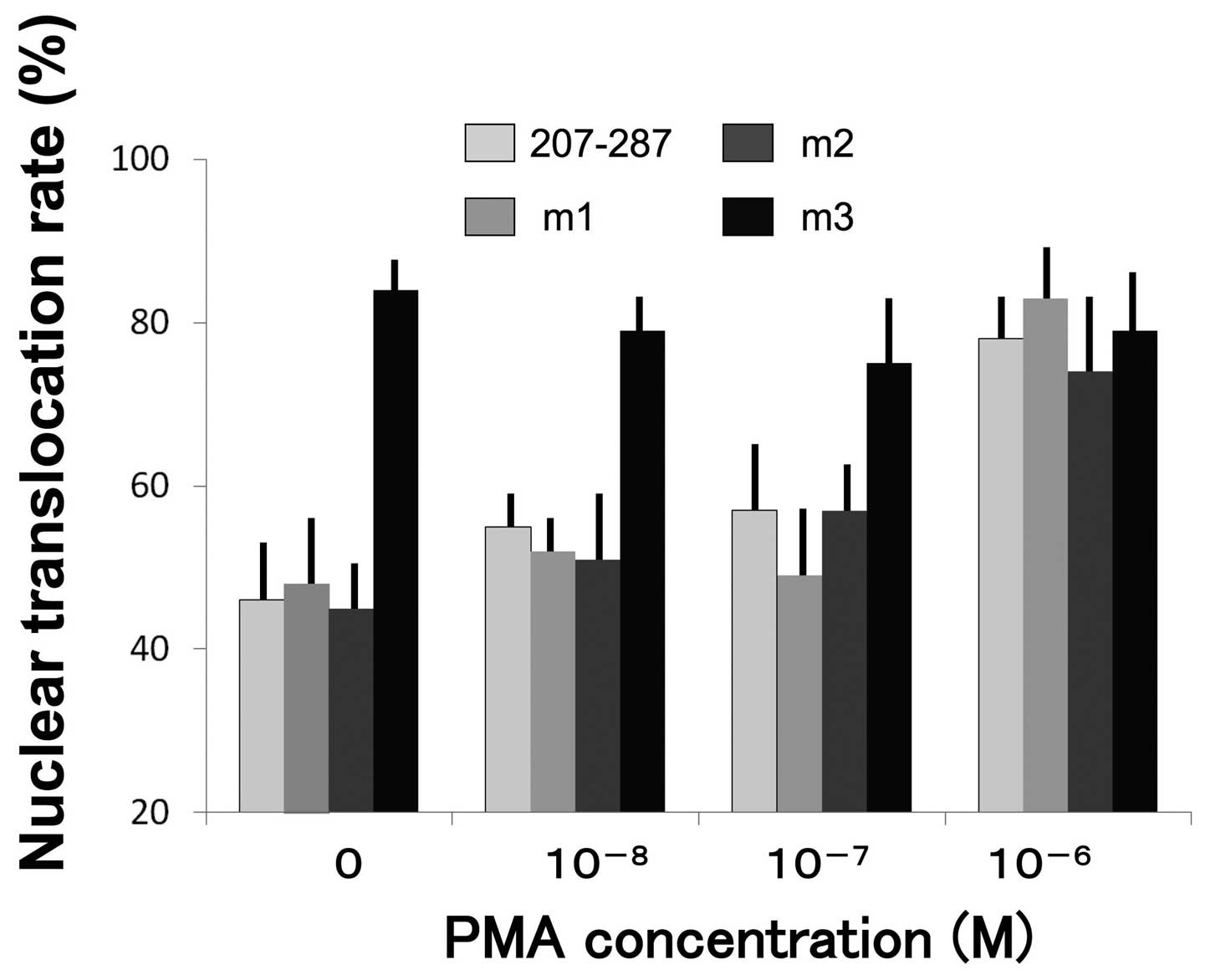Functional analysis of the nuclear localization signal of the POU transcription factor Skn‑1a in epidermal keratinocytes
- Authors:
- Published online on: June 13, 2014 https://doi.org/10.3892/ijmm.2014.1803
- Pages: 539-544
Metrics: Total
Views: 0 (Spandidos Publications: | PMC Statistics: )
Total PDF Downloads: 0 (Spandidos Publications: | PMC Statistics: )
Abstract
POU domain proteins are a family of critical regulators of development and differentiation due to their transcriptional activity in the nucleus. Skn‑1a, a member of the POU domain protein family, appears to be expressed predominantly in epidermal keratinocytes and is thought to play a critical role in keratinocyte differentiation and proliferation. In this study, we examined the mechanisms involved in the nuclear localization of Skn‑1a. We transiently expressed enhanced green fluorescent protein (EGFP) reporter constructs encoding EGFP fusions with Skn‑1a deletion and mutation proteins in normal human epidermal keratinocytes (NHEKs). The experiments clearly demonstrated that Skn‑1a contained a functional nuclear localization signal (NLS) domain, and that the smallest domain necessary for Skn‑1a nuclear transport was the GRKRKKR sequence located within amino acids 279‑285. Previous studies have shown that the phosphorylation of specific amino acids neighboring the NLS may regulate nuclear transport and that the amino acid residues threonine (Thr) and serine (Ser) have the potential to undergo phosphorylation. We examined whether the amino acids Thr286 and Ser287, which reside adjacent to the NLS at the carboxy‑terminal side, play a role in Skn‑1a nuclear localization. For this purpose, we generated three EGFP‑Skn‑1a mutation constructs, in which Thr286, Ser287, or both Thr286 and Ser287 residues were replaced with alanine, respectively. The results showed that the Thr286 and Ser287 residues were involved in the regulation of nuclear localization as well as epidermal differentiation. These results suggested that the epidermal differentiation signaling pathway, involving kinase and phosphatase activation, may regulate the NLS activity of Skn‑1a in keratinocytes. Collectively, these data contribute to understanding the mechanisms of nuclear translocation of POU domain proteins and epidermal differentiation.



